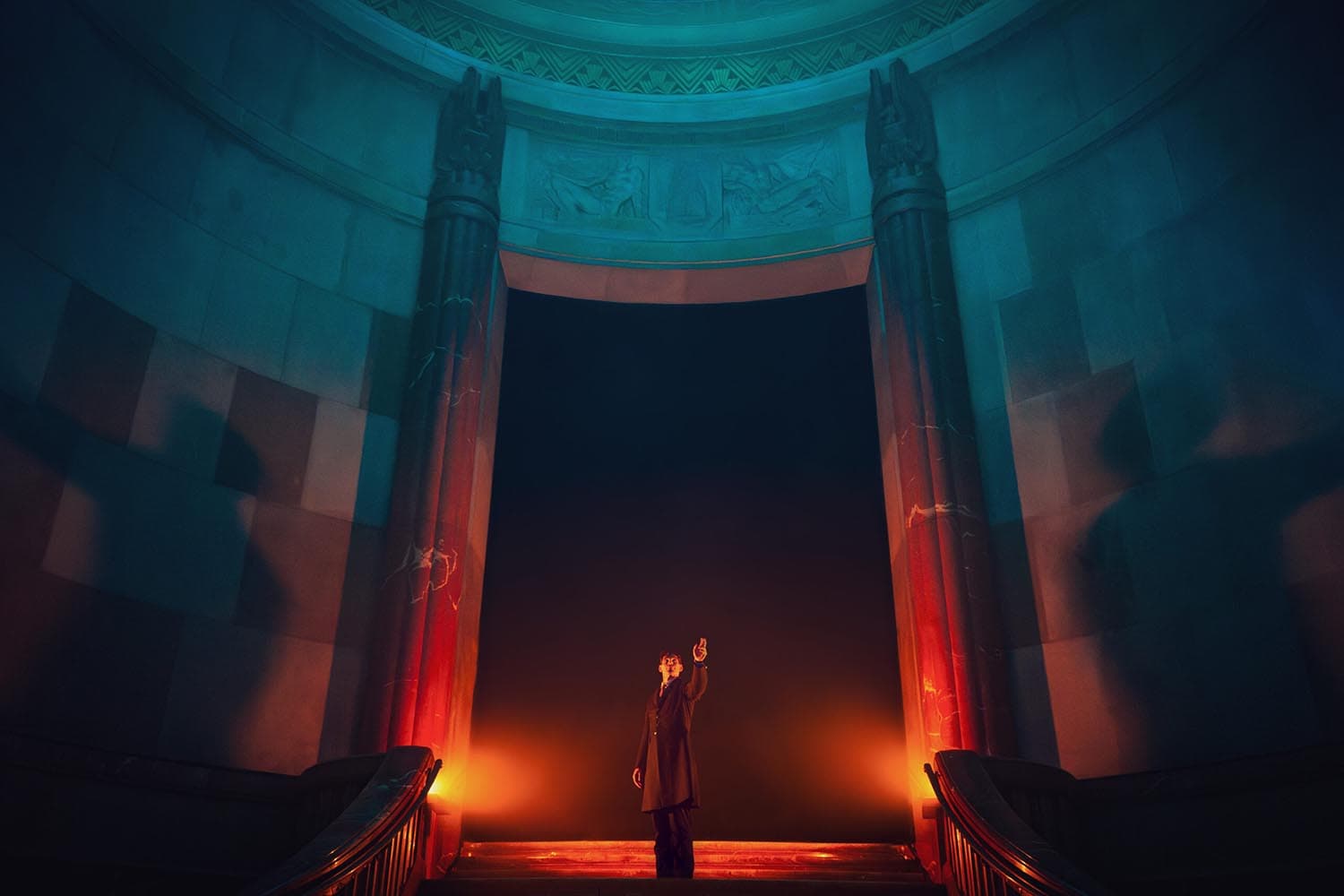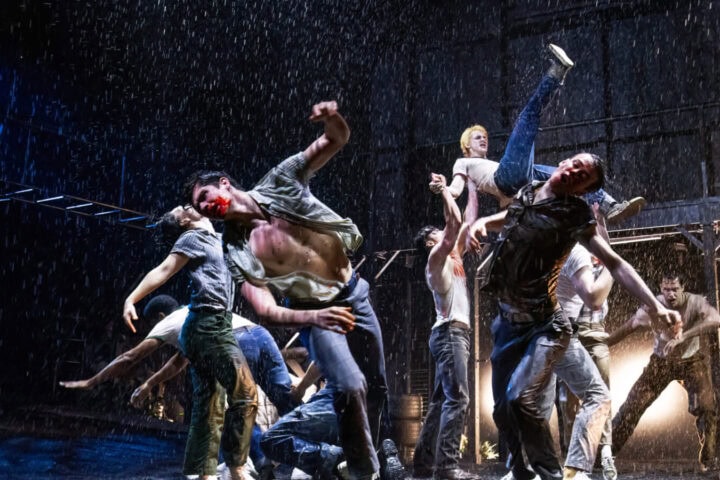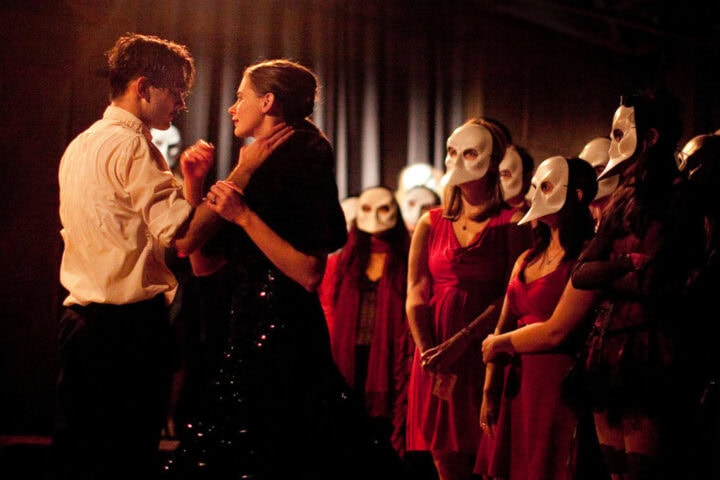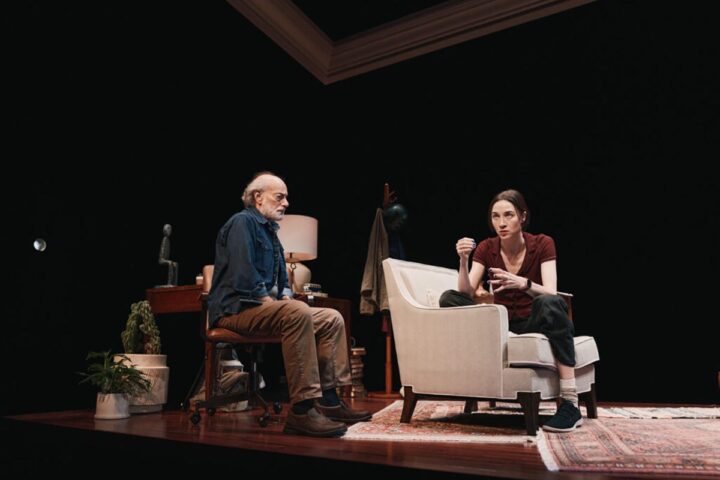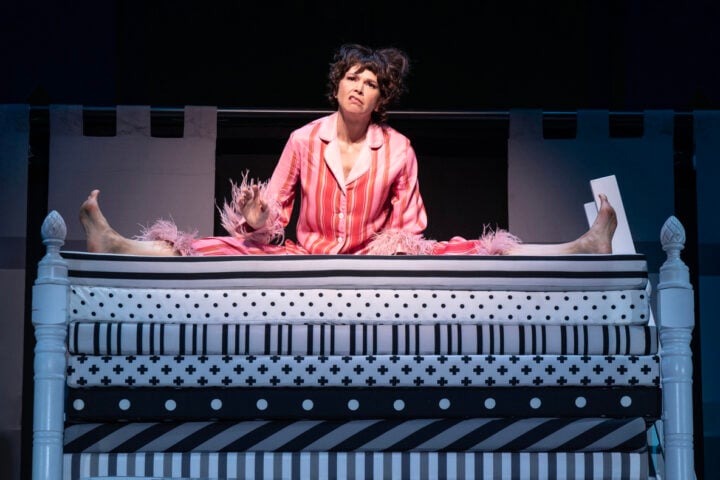I can’t stop following Tori Sparks. With an austere glower and sometimes a winking, welcoming grin, Sparks swaggers through the corridors of the Conwell Tower venue inside Twenty Exchange, fully in command. Sparks plays a minion of the devil himself in Life and Trust, her face lighting up with wicked gleefulness as she waltzes with her Faustian prey, literally bouncing off walls while clasping her victim close. Later, in the eerie wings of a makeshift theater, she tries on a bright red dress matching her striking hair before gazing at herself in a mirror, half-coyly, shuddering as she clutches a drooping mask to her face.
I’d like to call it a can’t-miss performance. But take a left turn instead of a right, or dawdle a few extra moments to take in the vaulted ceilings, and you might miss Sparks altogether. That’s the cost of investing in the choose-your-own-adventure business of Life and Trust, an astonishing new immersive dance-theater piece from Emursive, also a producing collaborator on the genre-defining Sleep No More. Sparks is just one of three dozen or so performers whom audiences can trail—or travel between—for the course of the show while the cast mingles in pairs and trios to perform more than 250 overlapping, interlacing scenes sprawling six floors.
In the prologue, we’re cast as prospective investors at a féte for the Life and Trust Bank, run by the tycoon J.G. Conwell (Karl Kenzler). It’s 1929, and right around the corner from Wall Street, Conwell’s empire is about to fall. “If you choose to invest with us, we count you as one of ours forever,” one of his associates informs us as we wait for a private meeting with the great man.
If that sounds ominous, it’s because the show is bursting at the seams with Faustian bargains. Conwell built his fortune on the sales of a magical cough syrup obtained from a magician, Mephisto (Kevin M. Pajarillaga, gliding through the space with reptilian menace). Before the devil cashes in on the deal, Conwell gets one last night to time-travel back to the Gilded Age.
Transported through time with him to the 1890s, the audience is free to explore, piecing together whatever parts of the story, constructed by the journalist-screenwriter Jon Ronson, that they might. Mephisto frees a woman from a cell. Wrestlers tumble dramatically in a makeshift ring inside a barn. Two men and a woman wrap, tendril-like, around each other in a shoddy tenement room. In a bar stocked only with Conwell’s green elixir, an addict shudders on the countertop. A vaudevillian clown performs a bawdy routine on a bare stage.
These miniature tales are told entirely with movement, thanks to engaging choreography from Jeff and Rick Kuperman, the Tony-nominated brothers behind The Outsiders. They’ve outdone themselves here, and Life and Trust excels at communicating character through gait and gesture alone: There may be far too many performers to keep track of, but each dancer seems to be the protagonist of their own adventure for as long as you stick with them.
Life and Trust follows many of the same parameters as its long-running predecessor. (After a series of “final” extensions, Sleep No More, which counted Sparks among its original cast, now promises to close in September after 13 years.) The audience dons masks, here black instead of white, and can follow any cast member at any time. Wandering off alone is fine. Talking, though, is not. Occasionally, performers will invite individual audience members behind curtains or through tiny doors for what Sleep No More termed “one-on-ones.”
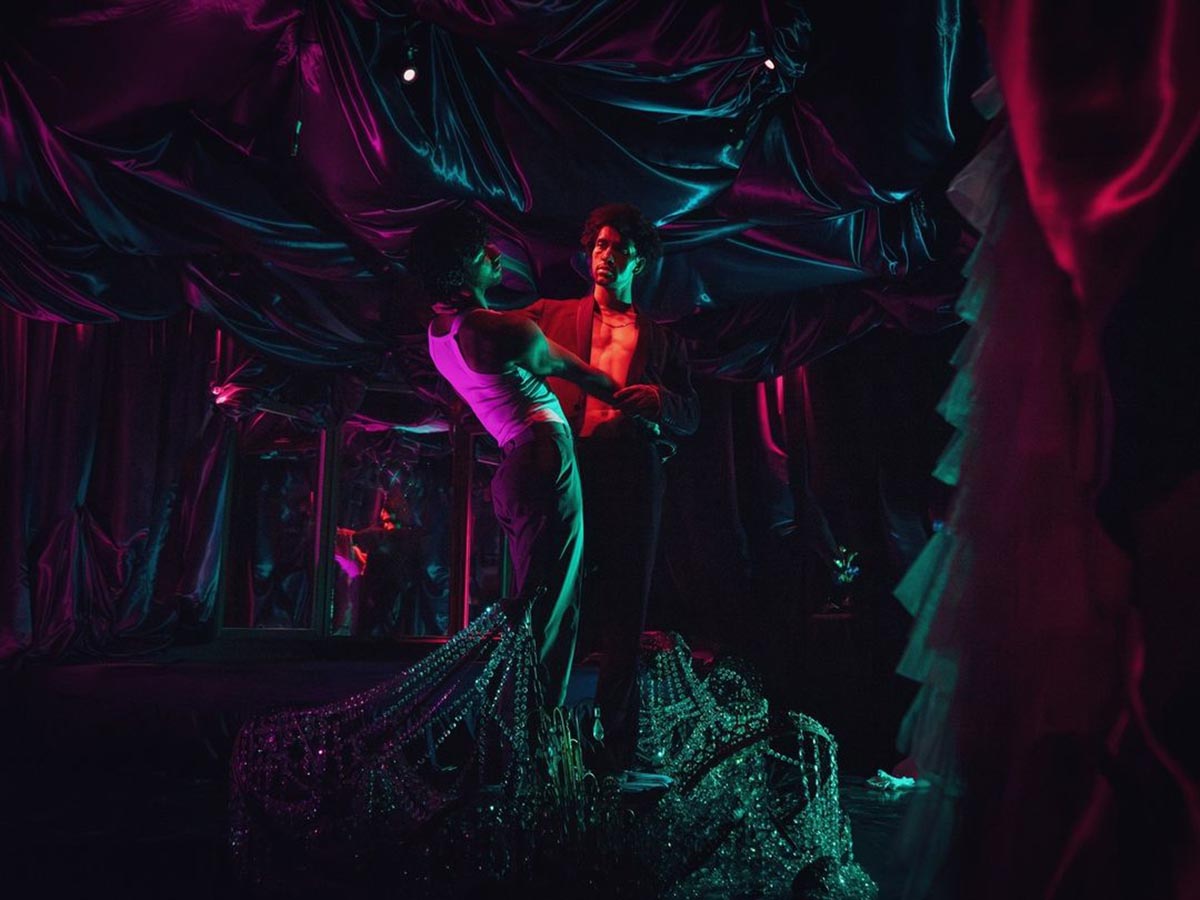
Most familiar from Sleep No More is the breakneck pace at which everyone gets from place to place, with some of the performers literally running through the dimly lit hallways, and audiences hurtling up and down staircases after them to keep up. There are elevators, yes, but if you want to stay with your favorite performer, you’re certain to get your steps in.
But Sleep No More, phenomenon that it is, remained monochromatic, as creepy-sexy witchcraft can only stay fresh for so long. Life and Trust, on the other hand, never dulls in its spicily inventive menagerie of styles and vibes. That’s in large part because the Conwell Tower is a marvel of looming pillars, gleaming marble, and tight-squeeze tunnels.
Directed by Teddy Bergman (KPOP), with experience direction and scenic design from Gabriel Hainer Evansohn, Life and Trust awes as both theater and environment. The Emursive team built most of the show’s spaces over the course of years, retro-fitting the action around the architecture, and room after room—grotto, laboratory, ballroom, circus—demonstrate that apparently herculean effort. And because each space is so completely convincing and enticing, it’s possible to appreciate the grand-scale machinery—for example, how does each actor arrive in a new location perfectly timed with Taylor Bense and Owen Belton’s spooky jazz score and Jeanette Yew’s explosive lighting?—while also remaining entirely hooked by the action.
Even though the details of the show’s storytelling remain fuzzy beyond the theme of Faustian bargains, I never missed being able to follow a plot. At one point, the dancer Sophie Bortolussi, playing a haunted mad scientist, throws herself violently from atop a lab bench, ricocheting when she lands onto an operating table on which she frenetically writhes. The magnetism of her anguished gestures wouldn’t have been particularly heightened had I realized, as character descriptions made available to press clarify, that she’s actually Marie Curie. I similarly couldn’t have picked out other late 19th-century icons like the anarchist Emma Goldman, the eugenicist John Harvey Kellogg, and the fictional narcissist Dorian Gray, all supposedly present.
But the creators of Life and Trust have opted wisely for mood over minutiae, and who anybody is doesn’t matter once you’re immersed in a tapestry of stories that seem to unspool almost infinitely. Almost infinitely but not quite, because Life and Trust, like Sleep No More, runs on a loop so most scenes will occur twice. But I only once stumbled upon a replay, a surging waltz for a dozen cast members, with Mephisto presiding maliciously. I didn’t mind seeing it a second time. If the price of succumbing to Life and Trust’s devilish delights is a lingering desire to see the whole thing again, that’s the kind of deal for which I’d willingly sell my soul.
For more information about Life and Trust, including ticketing information, click here.
Since 2001, we've brought you uncompromising, candid takes on the world of film, music, television, video games, theater, and more. Independently owned and operated publications like Slant have been hit hard in recent years, but we’re committed to keeping our content free and accessible—meaning no paywalls or fees.
If you like what we do, please consider subscribing to our Patreon or making a donation.

